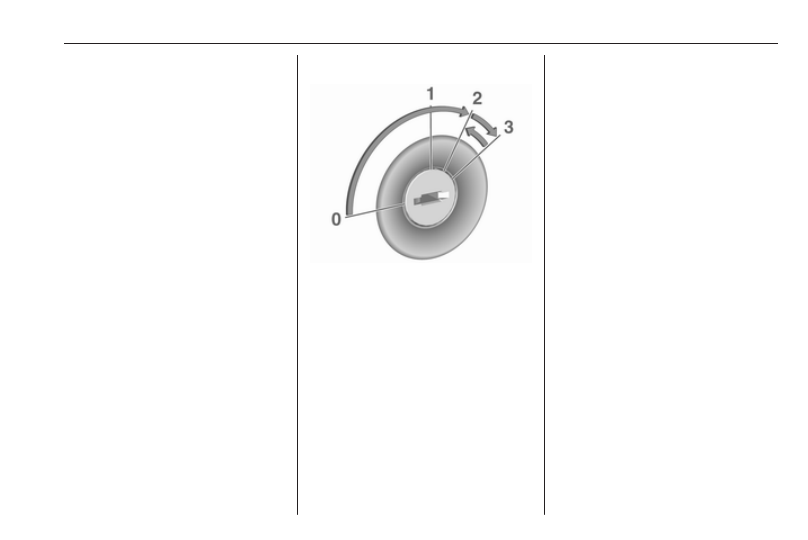Opel Adam (2019 year). Manual - part 8

Driving and operating
119
2 : ignition on power mode: Ignition
is on. Control indicators
illuminate and most electrical
functions are operable.
Depending on version, it is
necessary first to push the key all
the way in towards the steering
column and then turn the key
from position 2 to 1 or 0.
3 : engine start: Release key after
starting procedure begins.
Retained power off
The following electronic systems can
work until the driver's door is opened
or at the latest for 10 minutes after the
ignition is switched off:
● power windows
● power outlets
● power sunroof
Starting the engine
Turn key to position 1 to release the
steering wheel lock.
Manual transmission: operate clutch
and brake pedal.
Do not operate the accelerator pedal.
Turn key briefly to position 3 and
release: an automatic procedure
operates the starter after a brief
delay, until the engine is running. See
'Automatic Starter Control'.
Before restarting or to switch off the
engine, turn the key back to position
0.
During an Autostop, the engine can
be started by depressing the clutch
pedal.
Starting the vehicle at low
temperatures
The start of the engine without
additional heaters is possible down to
-30 °C. Required is an engine oil with
the correct viscosity, the correct fuel,
performed services and a sufficiently
charged vehicle battery.
Automatic starter control
This function controls the engine
starting procedure. The driver does
not need to hold the key in position 3.
Once applied, the system will go on
starting automatically until the engine
is running. Because of the checking
procedure, the engine starts running
after a short delay.
Possible reasons for a non-starting
engine:
● clutch pedal is not operated
(manual transmission).
● timeout occurred.